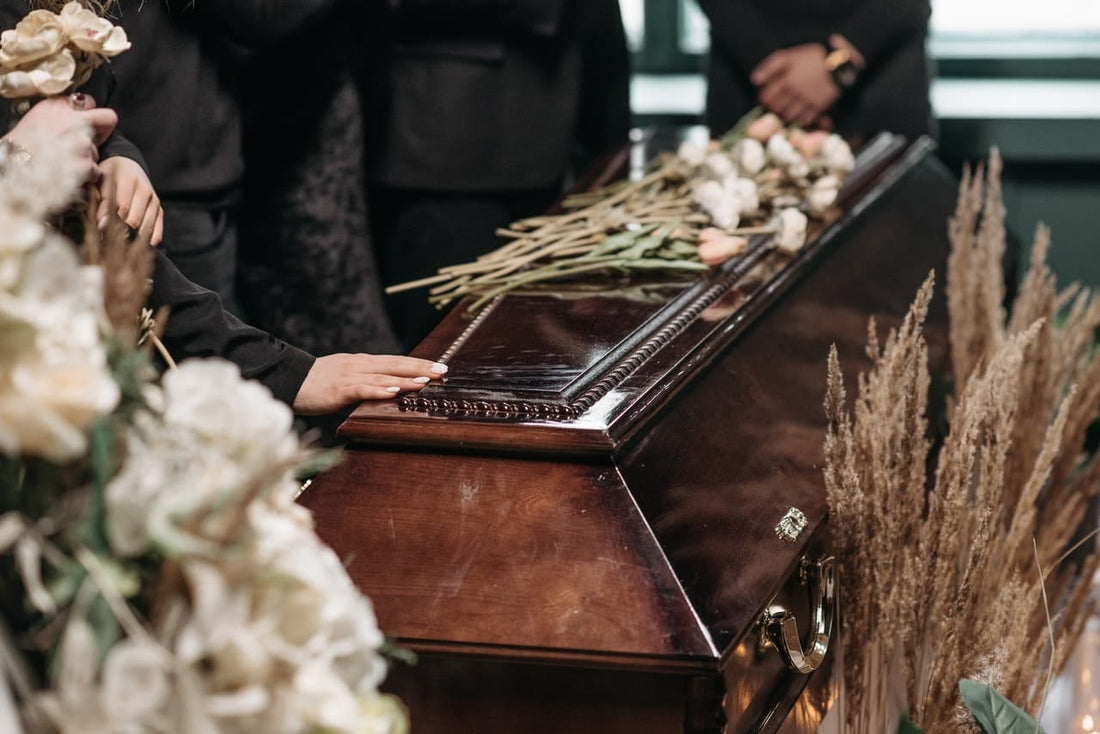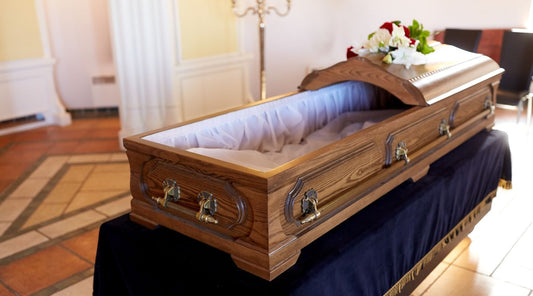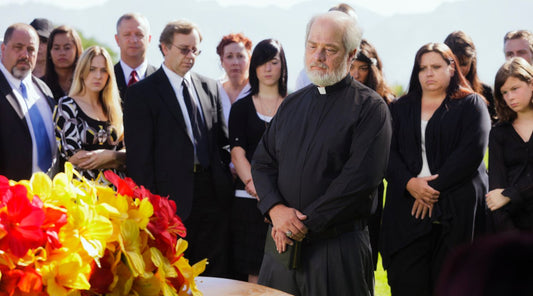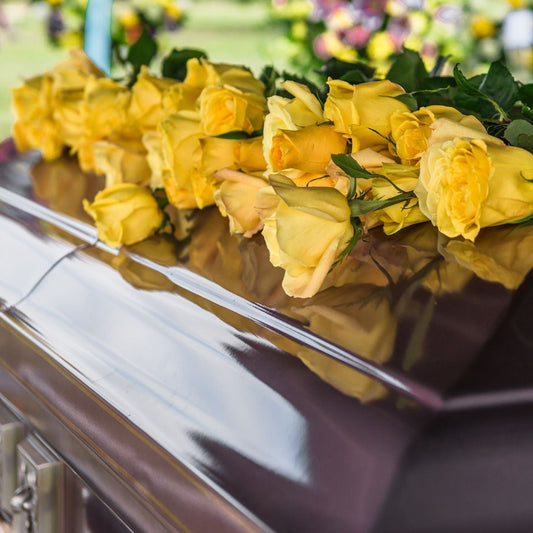
Who carries the casket at a funeral?
Arranging a funeral may be one of the most painful and difficult tasks a person can do in their lifetime. It's hard to plan the last rites for someone you loved while grieving their loss. There's not much you can think about and not much you wish to think about as well. But, it has to be done, and there are people around who will help you plan the perfect goodbye for your loved one.
Hopefully, this article will also assist you with deciding some of the logistics that go into planning the proper funeral.
Let's take a look into:
- Arranging a funeral
- Types of funeral
- Who carries the casket at a funeral?
- Choosing Pallbearers
- Duties of Pallbearers
Death is always a painful experience for relatives and friends involved in the loss. It's essential always to have loved ones and family members nearby to support you through this difficult time. Together you can plan the perfect send-off for your beloved.
Guide to Arranging a Funeral
To start planning the funeral, here are a few key factors to keep in mind in order to not miss out on anything and everything goes smoothly, and you give the deceased the perfect send-off.
You can get in touch with a funeral director since they will assist with the majority of the funeral planning. You must make sure the director is from a govt registered board or association of funeral directors. When hiring a director, you'll have to sign a contract. Make sure you read it thoroughly before jotting down your initials.
If you do not want to get one, you can reach out to your local authorities, who can direct you to the arrangements for the burial. You can even contact the Natural death center.
In the event of a death, there will be certain expenses that are required, like the coffin, flowers, burial /cremation fee, programs, and so on. Most funeral homes have standard rates for the cost of funerals. Considering all these aspects, you can have a rough idea of how much the entire service will cost.
Once you've decided on how the service will be conducted and what elements will be added according to the deceased's wishes, you can ask for a written estimate of all of the pricing details. You can compare prices with the estimates you've received and hopefully come to a comfortable arrangement that would make everyone happy.
Here are some things a standard funeral service might include
- A lined Coffin
- Transportation
- Mortician
- Legalities like paperwork
- Flowers
- Ushers
- Religious service
- Catering
- Stationery
- Funeral reception
Types of Funerals:
Here are some of the most common types of funeral arrangements available for you. If you're trying to decide on suitable arrangements, these options will hopefully help make things easier for you.
- Traditional

This type of funeral usually includes a visitation or viewing, a ceremony, and a burial at the end. This type of funeral is the most expensive since you'll have to get a mortician and include many different elements into the ceremony, including a reception afterward.
2. Direct Burial

In this type of service, the body is buried soon after the person passes away. This means there's no full service required, and the cost can be much less than a traditional funeral. There may be a standard fee, cost of transportation, graveside service charge, and any other additional expenses.
3. Cremation

Another alternative that does not cost a lot is cremation without embalming, right after death. Once the deceased is cremated, the ashes are collected to be kept in an urn in the family's home, placed in a crypt or scattered as per the requests of the deceased or family members.
The expenses will only be a basic funeral fee, cremation fees, the charges for the urn, and other additional fees, if there are any.
While you try and decide the funeral arrangements, you must keep the deceased's wishes in mind. If they've already made a will, you won't have difficulty organizing the funeral.
You can always take some time to talk with loved ones, like family and friends, to make sure you have everything you need to make the perfect funeral for the deceased.
Who carries the casket at a funeral?
There's a lot of coordination to plan and execute a funeral or wake. You require many people to get involved in the organization, and sometimes it can be overwhelming trying to decide who will carry the casket.
We're making it easier for you by providing all the necessary information on this one task so that when the time comes to choose the people who will carry your dear one for the last time, you will pick the right people.
It's necessary to know that the people chosen to carry the casket at funerals are called pallbearers. There are usually six pallbearers, and their primary task is moving the casket when required. The individuals chosen to be pallbearers can be given to both men and women.
There's no set rule of when you can have pallbearers, but you'll require their services if you choose to do a close casket service. You'll need their services to carry the coffin to the hearse once the service is over and again to the gravesite or cemetery in case there'll be a graveside service. In services with open caskets, the funeral home already has the coffin ready at the funeral venue.
Choosing Pallbearers

The pallbearer is the someone who carried the cloth for the coffin before laying it down. The "pall" in pallbearer stands for the fabric that drapes the coffin/casket. Nowadays, the term is used for individuals who accompany the coffin throughout its journey to its final resting place.
While choosing your pallbearers, you'll need to pick individuals who will be capable of lifting the casket and carrying the weight of the coffin. The people you choose can be close family members and close friends of the deceased.
It's better to pick individuals of the same height so that it's easier to carry the coffin and the weight is evenly distributed. There can be either 6 or 4 pallbearers depending on the weight of the casket.
If the coffin needs to be carried long, you can also consider using a wheeled bier for the weight. The funeral director can also provide pallbearers if that's the arrangement that the family members would prefer to have for the funeral.
There are also "honorary pallbearers." These individuals are given the task of walking ahead or beside the casket. They are chosen because of their close relationship with the deceased and are not necessarily required. Still, you can ask certain people you think should be a part of the funeral service to be honorary pallbearers.
Duties of Pallbearers
The primary duty pallbearer is to carry the casket to its final resting place. This will depend on the types of funerals arranged for the deceased. Suppose it's a burial or traditional service and a closed casket. In that case, the six pallbearers will have to carry the coffin to the hearse and then to the burial location if it is separate from the service location.
The pallbearers will carry the coffin to the crematorium and place it onto the catafalque in a cremation service. The individuals who are approached to be pallbearers can accept or reject the role; if you do accept it, then you'll need to make sure you're at the funeral location early. You'll have to carefully listen to the funeral directors' instructions and follow them precisely.
You'll have to be dressed appropriately, walk steady and carry the casket with respect and dignity. The pallbearers are expected to stand at the back of the hearse in silence, with their hands holding one on top of the other. They should be facing forward and awaiting instructions from the funeral directors. The pallbearers must also bow to the coffin for about 4 seconds before carrying it out of the service area.
The coffin should be carried feet first so the pallbearers can maintain balance. Only if the deceased is a vicar should the coffin be carried head first to face their congregation for the last time.
Conclusion
It's a great honor to be asked to be a part of the last rites of someone close to you. Taking them through their last journey to their final resting place will be an emotional and rewarding process. It will also give you time to correctly say your last goodbyes and part with your dear ones.
You can follow the few tips we have provided to ensure you're executing your task efficiently. That way, you can be ensured that one aspect of the service is completed appropriately for the deceased.
Blog Author: Tim


